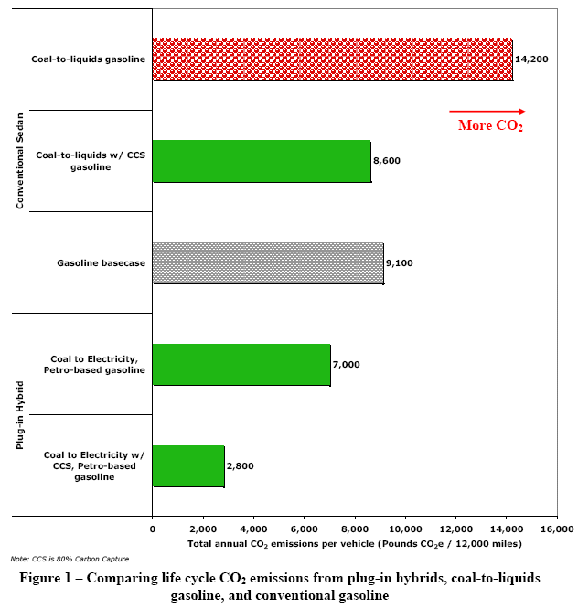
The transportation sector accounts for 22 percent of global energy use and 27 percent of global carbon emissions. In the major energy-using industrialized countries (specifically the 11 highest energy using IEA countries), nearly all (96 percent) of transportation energy comes from petroleum fuels, such as gasoline (47 percent) and diesel (31 percent). Road vehicles account for about three-quarters of all transportation energy use; roughly two-thirds of transport energy is used for passenger mobility while one-third is used to move freight. Therefore, the transportation sector is very energy intensive, but it also offers the greatest opportunity for energy conservation which can be achieved in a variety of ways. MP> Indeed there are many forms of alternative transportant modes, but in the US, it seems culturally unacceptable to do anyting than other than riding around in your own vehicle.

Transportation energy use has grown considerably faster in developing countries than in industrialized countries. Over the last three decades the average annual rate of growth over the period from 1971 to 2002 was 4.8 percent for developing countries and 2 percent for industrialized countries. The recent exploding growth in China, however, has raised the 4.8% growth rate considerably. Some estimates suggest that the Chinese private vehicle fleet is now growing at the rate of 20% per year.
A snapshot of the US transportation portfolio is shown below:


In terms of energy cost per unit mass for various transportation choices, the figure below is illuminating:
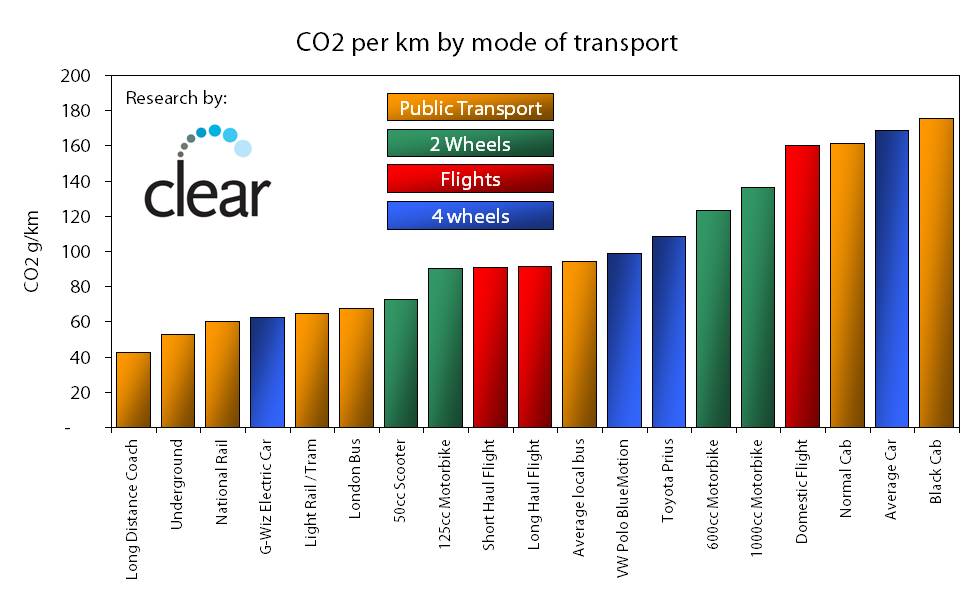
And business as usual is projected for our immediate future
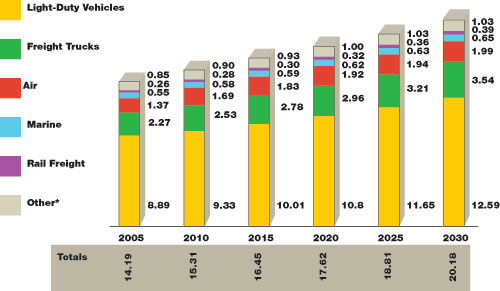
where it becomes painfully obvious that travel by car (light vehicles) completely dominates our portfolio. Hence, significant improvements in light vehicle fuel efficiency would go a long way in reducing energy consumption. Unfortunately, the US is clearly behind the rest of the world in this regard (although has of model year 2012, there are a variety of US cars that now get 40+ mpg ...).
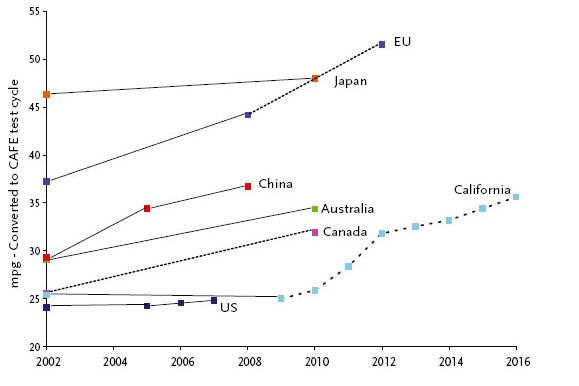
In addition, until recently (circa 2005), there have been significant annual increases in per capita vehicle miles traveled (VMT) in the US.
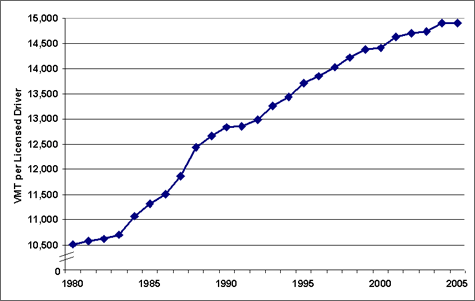
The recent spike in gas prices (starting in June 2008) has served to curtail this activity only slightly (as you will see in your 4th homework assignment).

In turn this produces more infrastructure requirements, e.g., roads and parking spaces. It's clear that our current infrastructure is saturated, and so we get:
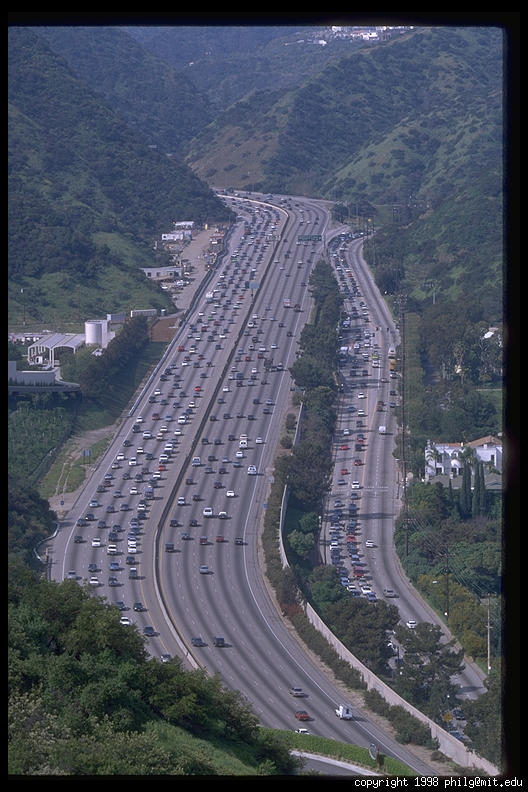
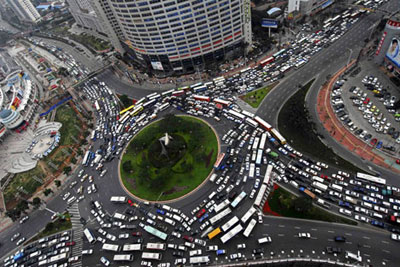

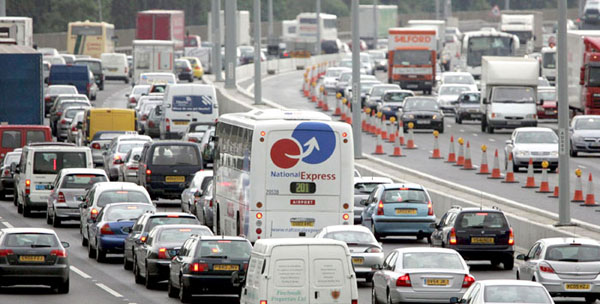

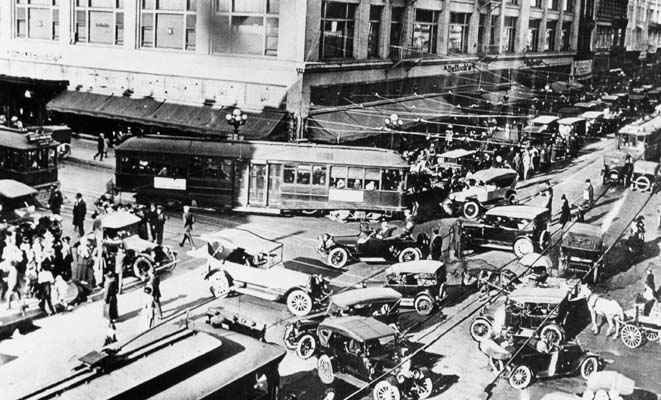
The System Never Changes
Only Individuals Migrate off path
An Example of an Ecological Footprint:
The true cost of our private conveyance habit:
In the US CO2 emission from transport
is about equal to that from Coal Fired Electricity Generation
This means there are two clear targets, in terms of new energy policy,
available to us if the goal is reduce the carbon footprint of
the USA.
Only in World War II was there an aggressive public relations campaign
to get people to drive less. It worked. Here is some propaganda
from that era.
And finally, in this era of high gas prices, there is now renewed interest in an old
technology that converts coal to gasoline. While the US has the coal resources
to do this and to significantly displace our need for foreign oil, this conversion process
is the most carbon intensive process there is, releasing about 1.5 times more carbon
per mile driven than just using conventional gasoline.
As a result, it becomes absolutely a requirement that Carbon Capture and Storage (CCS)
technologies are used in any potential facilities that convert coal to liquids.
So, how do we improve this situation? Below are some options:
 Major cause of air pollution which is
a health hazard that kills people!
Major cause of air pollution which is
a health hazard that kills people!
 We export billions of dollars of US
currency overseas for fuel and then evolve a
foreign policy to protect that
We export billions of dollars of US
currency overseas for fuel and then evolve a
foreign policy to protect that  this
is beyond stupid ...
this
is beyond stupid ...
 We consume lots of resources (steel) via the relatively
short lifetime of a basic non-recyclable unit.
We consume lots of resources (steel) via the relatively
short lifetime of a basic non-recyclable unit.  Automobiles basically serve to transport iron ore from mountains into
distributed junk yards across the US (entropy at work ...)
Automobiles basically serve to transport iron ore from mountains into
distributed junk yards across the US (entropy at work ...)

 40,000 people per year are killed in
accidents compared to 500 per year in mass transit.
40,000 people per year are killed in
accidents compared to 500 per year in mass transit.
 Infrastructure and maintenance costs are
absolutely enormous
Infrastructure and maintenance costs are
absolutely enormous  where is high speed
rail when you need it ...
where is high speed
rail when you need it ...
 Everyone's has got to park (except at
the UO) so we convert green space into parking lots (e.g. malls).
Everyone's has got to park (except at
the UO) so we convert green space into parking lots (e.g. malls).
 We end up with Grid Lock
We end up with Grid Lock





